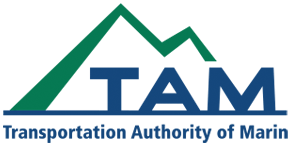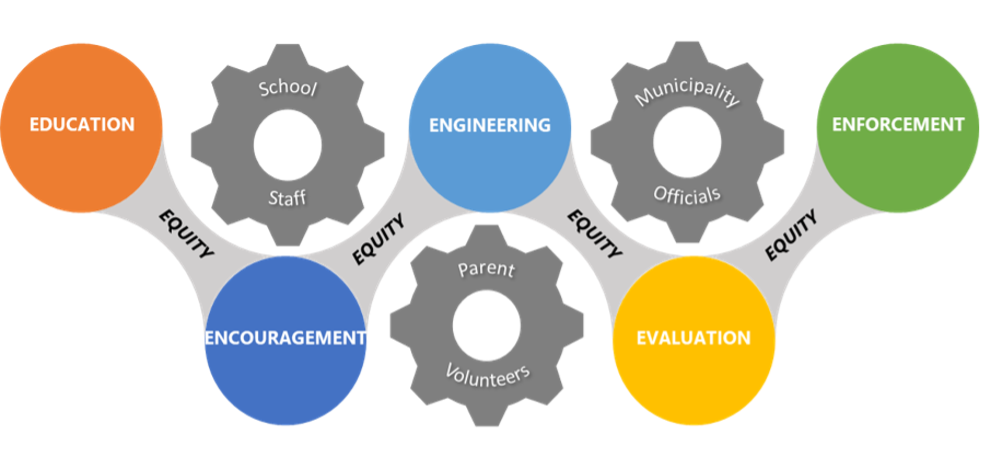About Safe Routes to Schools


The Marin Safe Routes to Schools (SR2S) program is managed for Transportation Authority of Marin.
The TAM Safe Routes to School Program
Marin County’s Safe Routes to School is a program of the Transportation Authority of Marin (TAM). TAM has created a long-term sustainable program that is institutionalized in schools with strong community involvement.
The program currently operates in 60 schools, serving a total population of over 29,000 students.
The program provides professional instructors to teach safe bicycling and pedestrian safety skills and oversee volunteers in promoting the program through contests, events, and regular submissions to the school newsletter.
Each school district is offered a facilitated Task Force that brings together the school volunteers with school and jurisdictional staff to discuss infrastructure and enforcement issues, and to plan out district-wide promotion.
The consulting team consists of planning and engineering professionals to assist in identifying Safe Routes solutions, develop concepts, and apply for grant funding. To date, the program has succeeded in constructing and designing over 150 projects totaling over $40 million.
In 2010, Marin Safe Routes to Schools was honored with the Metropolitan Transportation Commission’s (MTC) Grand Award. The award was shared by Cool the Earth of Kentfield, Street Smarts of San Jose and Cycles of Change in Alameda County.
MTC’s biennial awards ceremony, Excellence in Motion, recognizes people, projects, and organizations that have made singular contributions to improving the Bay Area’s transportation. SR2S was recognized for its excellent school education program that promotes walking and bicycling to schools in Marin.
Program History
In August 2000, the National Highway Traffic Safety Administration funded the Marin County Bicycle Coalition (MCBC) and Walk Boston in Arlington, MA to develop a national model Safe Routes to Schools program.
Congressman James Oberstar (MN), ranking Democrat of the House Committee on Transportation and Infrastructure, endorsed the program as a means to reduce traffic congestion around schools and promote healthy alternatives.
The Marin Community Foundation supplemented the program with a $25,000 grant, and the City of Fairfax also received $25,000 as one of ten pilot programs sponsored by the California Department of Health Services.
Marin County is a suburban community north of San Francisco with many historic small towns and miles of open space. Despite its low population growth, traffic congestion has grown increasingly worse, with up to 21–27% of the morning commute consisting of parents driving their children to school (Marin Congestion Management Agency). Sixty-two percent of the County’s CO2 emissions are attributed to transportation, causing environmentally conscious Marin to have a higher ecological footprint than the national average.
Nine Test Cases
To demonstrate the benefits of providing Safe Routes to Schools, MCBC recruited nine pilot schools in four different geographic locations. Initial surveys reported that 62% of the students were arriving by car, with only 14% walking, 7% biking to school, 11% carpool, and 6% arriving by bus.
Each school received guidance, forms, newsletters and other promotional materials. In Mill Valley and Ross Valley, schools joined to form citywide Task Forces to study engineering solutions for safety issues present on the routes to schools. Parisi Transportation Consulting, a transportation consulting firm, assisted in developing these plans.
Every school in the pilot program held periodic Walk and Bike to School Days and participated in the Frequent Rider Miles contest, which rewarded children who came to school walking, biking, by carpool or bus. Volunteer team leaders at each school assisted in running the events and contests and attended the Task Force meeting providing valuable insights into the difficulty that parents faced when walking or biking to school. These enthusiastic parent volunteers were key to the success of the program.
At the end of the pilot program, the participating schools experienced a 57% increase in the number of children walking and biking and a 29% decrease in the number of children arriving alone in a car.
Building on Marin’s Success
In 2003, the County of Marin adopted the Safe Routes to Schools program. The Marin Congestion Management Agency funded the program through the Federal Enhancements program and the Bay Area Air Quality Management District’s Transportation for Clean Air funding award.
In November 2004, the voters of Marin passed a ½-cent, 20-year transportation sales tax, which dedicates 11% for Safe Routes to Schools programs, crossing guards, and Safe Routes infrastructure. The Transportation Authority of Marin (TAM) took over the program in 2005. Since then the Transportation Sales Tax Renewal Expenditure Plan approved by voters as Measure AA in November 2018 continues the ½-cent transportation sales tax and expenditure plan initially passed in 2004.
TAM’s Safe Access to School program has three components: a Crossing Guard program providing over 96 crossing guards to Marin County schools; The Safe Pathways program, which distributes approximately $2.5 million in funding every two years; and the Education and Encouragement program. A citizens oversight committee evaluates all the programs of the sales tax spending every year.
As a result of the programs more than half of Marin County students walk, bike, carpool or take a bus to school.
Safe Routes Goes National
After successful pilot programs in Marin and in Arlington, MA, the Safe Routes to Schools program quickly spread across the country.
In 2005, the SAFETEA-LU federal transportation bill provided $612 million for a new national Safe Routes to Schools program that provides benefits in all 50 states. Communities have used this funding to construct new bike lanes, pathways, and sidewalks, as well as launch Safe Routes education and promotion campaigns in elementary and middle schools.
Each state has hired a full time Safe Routes to Schools coordinator. Congress has subsequently eliminated the specific funding for Safe Routes to Schools but continues to offer competitive funding through the Transportation Alternatives program.

Safe Routes to Schools in Action
The mission of Safe Routes to Schools is to increase the number of children walking and biking to school.
Our initiative integrates health, fitness, traffic relief, environmental awareness, and safety all under one program. It’s an opportunity to work closely with Schools, communities, and local government to create a healthy lifestyle for children—and a safer and cleaner environment for everyone. The program consists of six focus areas:
EDUCATION
Classroom lessons teach children the skills necessary to navigate through busy streets and persuade them to be active participants in the program. Safe Routes instructors have developed the curriculum that includes lessons on safety, health, and the environment.
ENCOURAGEMENT
Encouragement strategies, such as events, contests, and promotional materials, encourage children and parents to try walking and biking to school. The program supports and coordinates volunteer organizers and provides Schools with promotional and contest materials, prizes, and ongoing consultation.
ENGINEERING
The focus of the engineering component is on creating physical improvements to infrastructure near Schools, reducing speeds and establishing safer crosswalks and pathways. The Program’s professional traffic engineers assist Schools in developing a plan to provide a safer environment for children to walk and bike to school. The improvements are implemented at the direction of the local jurisdiction public works staff.
ENFORCEMENT
Law enforcement officials participate throughout the Safe Routes process to encourage safe travel through the community. Targeted enforcement of speed limits and other traffic laws around Schools make the trip to school more predictable for students and allow them to interact with motorists and other travelers in the safest possible way. The program also includes unique safety-related messaging, enforcement enhancements and outreach to drivers through driver safety campaigns.
EVALUATION
Continually evaluating the Program is important to determine which approaches are successful; which can be improved; and which can be replaced. This ensures the effectiveness of the Program in the communities where we operate.
EQUITY
Equity aims to promote egalitarian support of safe, active, and healthy school travel opportunities for all children within the county. In recent years, Marin SR2S has worked to promote equitable distribution of program resources to students countywide. A bi-lingual volunteer coordinator works with Spanish-speaking parents in the school to organize events and give them a voice in assessing safety concerns.
